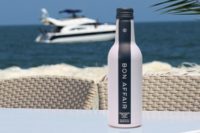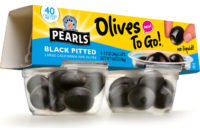When major coffee manufacturers introduced single-serve coffee pods a few years ago, they probably weren’t bargaining for national news coverage and contentious debates.
In their minds, they had found a better, more convenient way to get a cup of freshly brewed coffee. They knew that instead of having to make an entire pot of coffee — about 4-6 servings on average — single-serve coffee pods had the potential to produce less waste and consume less energy. In fact, a study conducted by coffee pod manufacturer Keurig found that its brewing machines use less energy, water and coffee grinds when compared to the traditional method of brewing coffee.
However, critics of single-serve coffee capsules often focus on the packaging that holds coffee grounds. They see this packaging as a waste stream that would not otherwise exist in the traditional drip brewing machines. Traditional brewing machines using ground coffee beans are perceived to use less material because they are packaging larger volumes. Single-service coffee pods are taking a lot of open criticism in the media.
For instance, a recent story in MacLean’s, titled “Coffee pods: The new eco-villain,” paints the pods as largely unrecyclable and the “eco-villain of our times.” There is a social media campaign called “Kill the K-Cup,” which has produced a video garnering almost 700,000 views since its release at the beginning of this year. It portrays the waste stream generated by single-service coffee pods with relatively high production value. The clip borrows from the style of the film Cloverfield, where a group of urban dwellers are faced with a Godzilla-type monster that leaves death and destruction in its wake. However, in the “Kill the K-Cup” film the monster is composed of K-cups.
Looking specifically at the numbers, a study done by Keurig shows that the actual pods carry a significant environmental footprint throughout the whole process. In a life cycle assessment done in 2009, product packaging accounted for 24.2 percent and end-of-life or disposal accounted for 5 percent of carbon emissions. Compared to brewing with traditional drip coffee, using single-service pods accounts for three times more global warming potential over the life cycle of a product. Another study completed in Germany in 2011, published in the International Journal of Consumer Studies, found that preparation of coffee by the consumer accounted for 30 percent of overall emissions in the lifecycle of the product. The environmental impact of the automatic machines and the packaging of coffee for these machines was the highest of those tested, and required significantly more energy consumption than other methods of preparation.
With all the bad press and mounting studies, customers have been offloading their single-serve coffee machines, leaving producers of single-serve coffee pods scrambling for solutions.
It’s in situations like these where manufacturers can lend a hand. By helping their customers think about the contentious parts of their product, manufacturers can help them minimize the risk of consumer outcry or other market barriers.
It’s a type of risk management and requires asking questions about their customers’ needs and values. Questions like: do your customers consider how easy your products are to dispose of? What do customers need from packaging to enjoy their purchase? Do they have environmental or economic values that influence their buying decisions?
In the case of single-service coffee pods, manufacturers can offer an alternative. Using bioplastics or biodegradable resins to create packaging, manufacturers have developed a compostable coffee pod. It’s a non-waste-generating alternative that is similar functionally to traditional plastics. However, the compostable pod breaks down just as the organic contents of the pod would.
The pod has an aroma-preserving outer packaging. It is constructed to withstand the high-pressure and the high-temperature environments of single-service coffee machines. The packaging still includes a biodegradable filter. The plastic pod is made up of three functional layers: the outer carrier layer, the thin barrier film layer and the inner sealing layer. These layers are sealed together with a compostable laminating adhesive. There is a smooth outer surface that provides a great medium for labelling and making sure packaging remains true to brand.
While a manufacturer has to consider the operational differences of working with biodegradable resins, the customer shouldn’t be faced with any noticeable differences. The customer still gets the convenience of a single-serve cup of coffee that uses less water and coffee grounds, and avoids adding to the waste stream. It’s the best of both worlds. Compostable and convenient: an individual serving of coffee with no side of guilt.
Single-service coffee pod makers get to tell a great story and, more importantly, change the conversation around their product. They get to say that both innovation and convenience can be possible – which is much better than “K-cups are a giant, city-crushing monster.”
Haremar Plastics
(905) 761-7552
www.haremar.com



